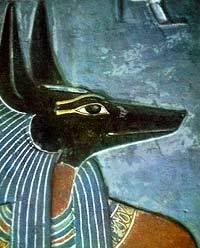
Dead celebrities draw crowds all year round. Long after the rich and famous depart this mortal life, their larger-than-life personalities live on, thanks to gravesite tourism.
Each year, thousands of Americans make pilgrimages to cemeteries from coast to coast, paying their respects to stars whose names have made the eternal leap from flashing lights to ornate stone. And in death, as in life, there's a difference between the A-list and the D.
"Everyone has a different opinion of what fame means," said Jim Tipton, the founder of the Web site FindaGrave.com, which catalogs more than 12 million gravesites around the world. "We have about 50,000 flagged as famous or notable, and it's a contentious issue of who makes the list, but we try to be accommodating."
The most popular graves are those of celebs who were the most iconic, Tipton said. It's an elite group that includes Marilyn Monroe, Elvis Presley, Bruce Lee and Jim Morrison.
"Certainly there's that fascination with those people who die ahead of schedule," Tipton said.
So fans flock to Cimetiere du Pere-Lachaise in Paris to commune with Morrison, the former lead singer of the Doors, or brave the throngs at Pierce Brothers Westwood Cemetery, where Marilyn rests for all eternity.
"It's something that people have been doing as long as they've been traveling, really — to go and honor and pay respects to some figure who's been really, really important in your life for one reason or another," said Don George, global travel editor for Lonely Planet. "It just takes a kind of a bizarre twist in a place like Hollywood, where the magnificence and the extravagance of the lives of these people is carried on into death," he added.
Hollywood offers hundreds of dead celebrities for those who have the time. Natalie Wood, Walter Matthau and Truman Capote are a few of the 213 famous interments near Monroe's at Pierce Brothers Westwood, according to FindaGrave.com.
While Joe DiMaggio may have had fresh roses delivered each week to his ex-wife Marilyn's crypt, it's Hugh Hefner who is rumored to have reserved an eternal rest next to the bombshell.
"He's ready to move in next to Marilyn when the time comes," George said.
"We're very protective of that place and the families we assist," Bolton said. "There are some who just would prefer that we don't say a lot about a particular celebrity who is buried there."
Along with Westwood, celebrity visitors stop by Forest Lawn Memorial-Park in Glendale, Calif., known as the "Country Club for the Dead," George said. Its eternal inhabitants include Clark Gable and Jean Harlow.
Its sister park, in the Hollywood Hills, holds the remains of Lucille Ball and Bette Davis. Another park, Hollywood Forever, completes the Tinseltown grave tour.
The ex-singer of The Doors, JIM MORRISON, is buried in Paris, France at the most famous and most beautiful cemetery in the world "Pere Lachaise". His gravesite is one of the most visited "sites" in Pari






 ” frightened some moviegoers out of
” frightened some moviegoers out of ’ spawned a whole era of the relationship between two policemen, based on an enormous amount of truth about working on the job. “
’ spawned a whole era of the relationship between two policemen, based on an enormous amount of truth about working on the job. “ 
 ’ was the first big, blockbuster outdoor-adventure film. And certainly ‘
’ was the first big, blockbuster outdoor-adventure film. And certainly ‘ ’ is not like any old MGM musical. Each one of these films is unique, and I consider myself fortunate to be associated with them.”
’ is not like any old MGM musical. Each one of these films is unique, and I consider myself fortunate to be associated with them.” .”
.”
